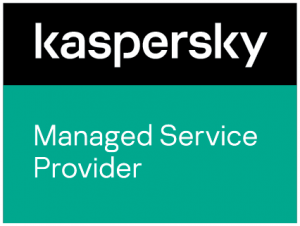The Cost of Downtime: How It Affects Your Business

In today’s hyper competitive business environment, unexpected downtime has quickly become one of the leading concerns of businesses of all sizes. Every aspect of normal operations is affected, from hardware failure and software issues to natural disasters and cyber attacks. When something goes wrong and causes downtime for any reason, the costs are significant and have far-reaching consequences for any organization’s bottom line.
Downtime Costs
The costs associated with downtime depend on several factors, including company size and the severity of outages. A small company might lose hundreds or even thousands of dollars per hour during an outage, while larger enterprises could lose millions. Furthermore, downtime leads to additional expenses beyond revenue losses, such as:
Employee Productivity Loss: Downtime can result in employees not working, leading to lost productivity, and missed deadlines – something which has an immediate effect on any company’s bottom line, especially if prolonged.
Recovery and repair expenses: Depending on the cause of an outage, additional expenses may arise in terms of replacing broken hardware and software as well as hiring outside experts to aid recovery processes; all this adds up quickly.
Reputational harm: Downtime can damage a company’s reputation and result in lost business and negative reviews that will tarnish their success for months or even years to come, especially given that customers today can access reviews online easily and give feedback freely.
Compliance penalties: In certain industries, downtime can result in compliance violations that lead to penalties and fines; healthcare organizations could find themselves subject to HIPAA violations should patient data become compromised during an outage.
Mitigating Downtime Damage Management Strategies
Companies cannot prevent downtime entirely, but there are ways they can mitigate its costs and impact. One effective approach to doing this is developing and implementing an extensive disaster recovery plan that details backup procedures for critical systems and data as well as ways of communicating with employees, customers, and vendors during outages.
Businesses should invest in redundant systems as part of a comprehensive disaster recovery strategy, to ensure operations continue uninterrupted in case one system or network goes offline. This is particularly useful for tech-dependent industries like online retailers or financial institutions that rely heavily on IT solutions for operations.
Implement a proactive monitoring system as one way of mitigating downtime effects and improve productivity. A proactive monitoring system can detect potential issues before they turn into major ones, giving companies time to take remedial action before an outage occurs in some instances, even completely preventing an outage altogether, increasing uptime and productivity overall.
Conclusion
Implementing an efficient backup and disaster recovery solution is an integral part of any comprehensive cybersecurity strategy. Prometheus Shield DR allows your business to rest easy from ransomware attacks or any other disasters that might threaten operational downtime. So take action now with our comprehensive disaster recovery options, and don’t wait; take immediate steps now and protect it with Prometheus Shield DR! Contact us to discover more about how we can protect your business against downtime while ensuring continuity.







